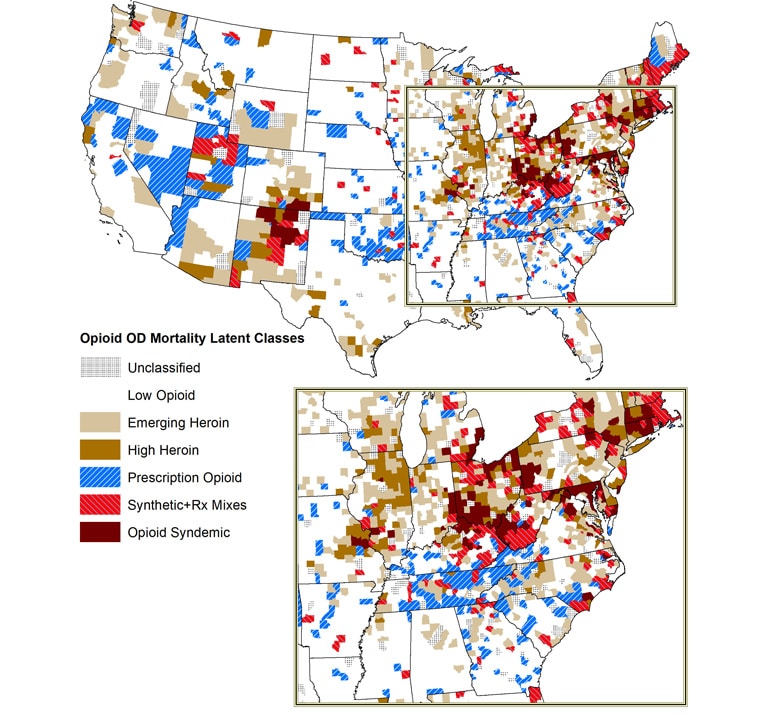The United States is suffering from several different simultaneous opioid epidemics, not just a single crisis, a study of drug overdose deaths shows.
Researchers conducted a county-level analysis of death certificates from across the country that noted opioid overdoses as the cause of death. The findings show regional differences in the kind of opioids that cause the most overdose deaths—differences that policymakers considering varying strategies to address the epidemics should take into account, says David Peters, an associate professor of sociology at Iowa State University and coauthor of the paper in Rural Sociology.
“Our results show that it’s more helpful to think of the problem as several epidemics occurring at the same time rather than just one,” Peters says. “And they occur in different regions of the country, so there’s no single policy response that’s going to address all of these epidemics. There needs to be multiple sets of policies to address these distinct challenges.”

The study describes three different opioid epidemics in the US, as well as a syndemic, or a single population experiencing more than one epidemic:
- A prescription drug epidemic persists in rural southern states where access to opioids centers on local pharmacies. Overdose deaths linked to pharmaceuticals peaked nationwide in 2013 and have fallen in the years since. However, some rural counties continue to struggle with prescription drugs.
- A heroin epidemic has taken root in states out west and in the Midwest, especially in urban areas near major interstates that experience heavy drug trafficking. Overdose deaths related to heroin clustered along two major corridors, one linking El Paso to Denver and another linking Texas and Chicago. Peters says those findings correspond with known routes used by cartels smuggling heroin into the United States from Mexico.
- An epidemic of synthetic opioids, such as fentanyl, has grown as a major concern in urban centers in the northeastern United States. Often these synthetic drugs are mixed with heroin or cocaine and made to resemble prescription medications. These counterfeit street mixes are highly potent and deadly.
- A syndemic involving multiple simultaneous opioid epidemics exists in counties where the opioid crisis first erupted, particularly in mid-size cities in Kentucky, Ohio, and West Virginia that have experienced steep job losses in manufacturing and mining.
Roughly a quarter of all counties in the United States fall into one of the epidemic categories noted in the study.
Researchers used data from the Centers for Disease Control and Prevention. The US Department of Agriculture’s National Institute of Food and Agriculture funded the work.
Source: Iowa State University



